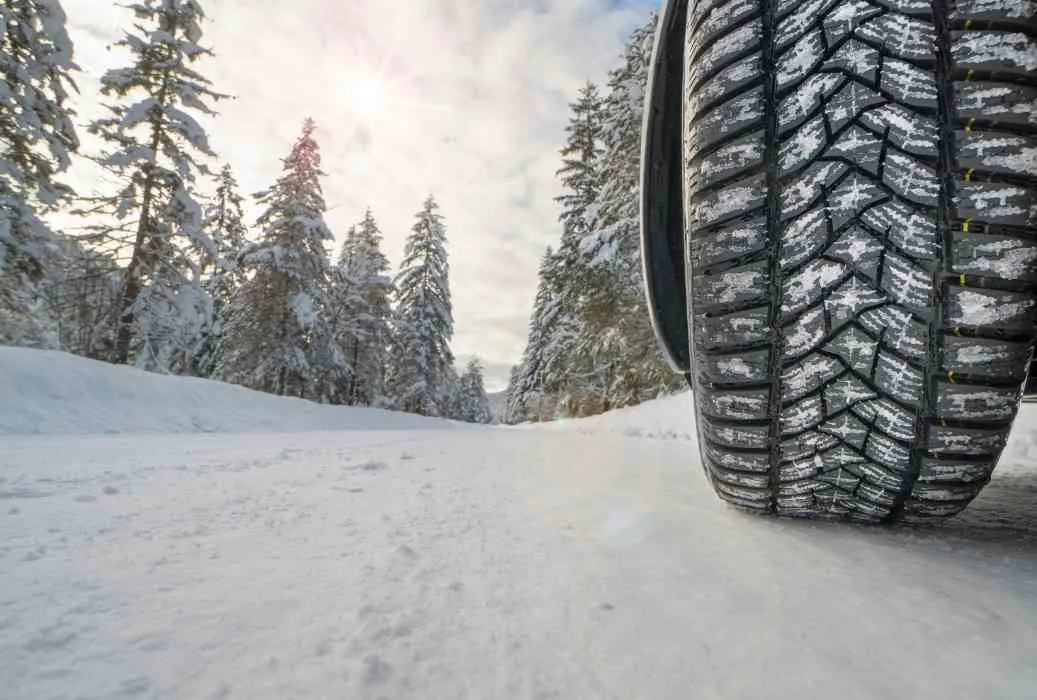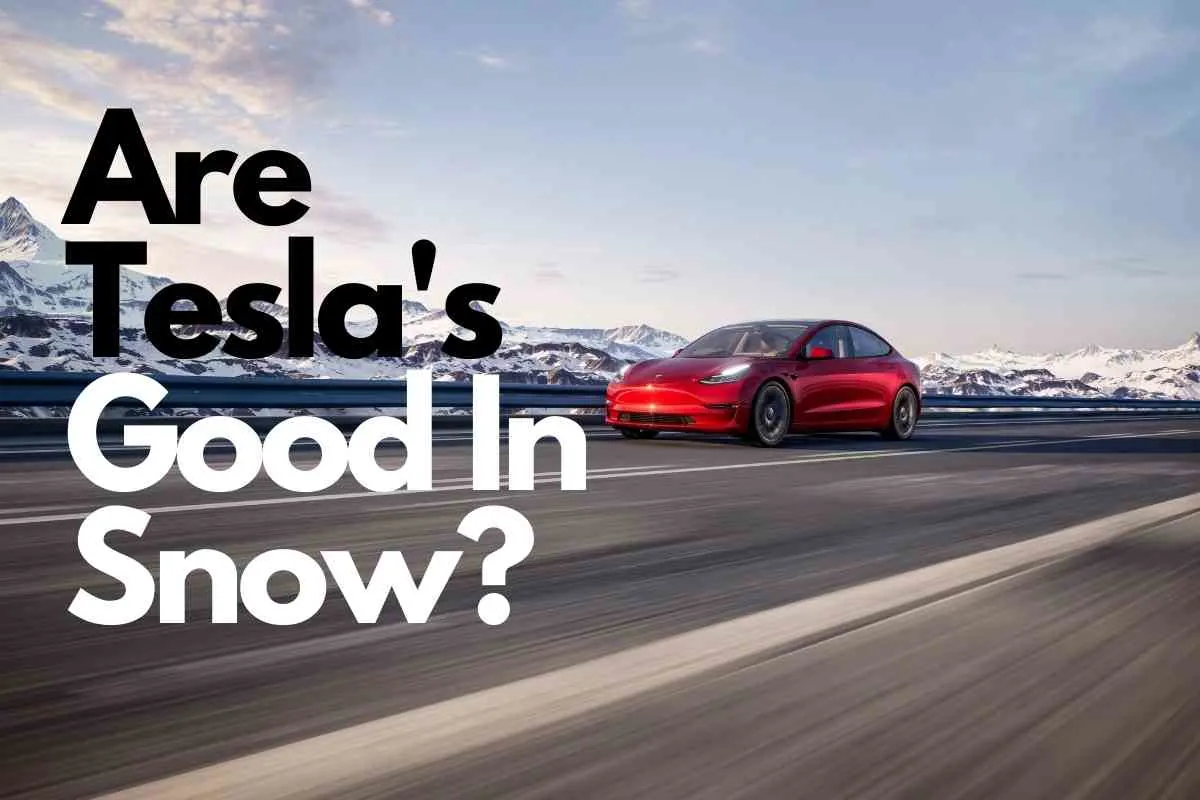While it’s fun to drive on a warm day, the same can’t be said when the highway gets covered by snow.
While many vehicles are known for being good in foul weather, you may be wondering where Tesla and other electric vehicles rank. The last thing you want is to get your Tesla towed in a snow storm.
If you’re curious as to whether your Tesla will be good in snow, here’s what you need to know.
Tesla’s are extremely safe and high-performing vehicles in the snow. Combining state-of-the-art electronics with an advanced traction control system, today’s electric cars such as Tesla do far better in foul weather than early models of electric vehicles.
In fact, many experts and vehicle enthusiasts will argue that the increased torque offered by Teslas and other electric vehicles actually makes them even better in snow than traditional combustion engines.
That’s just one of the many ways that Tesla has put their customers’ experience first.
Read on for more info about taking your Tesla out in the snow.
What Makes Teslas So Good In The Snow?

Surprisingly to many drivers, it’s the Tesla battery pack that plays a big role in how the car handles in the snow.
Due to the positioning of the battery pack within the car, it gives Tesla a very low center of gravity, allowing it to be steady on the road when the pavement is slippery.
If you live in an area that has harsh winters, most experts agree an AWD Tesla will give you the best performance for winter weather driving.
By using all four of its wheels at different speeds, your Tesla can optimize the traction needed to keep you safe.
In fact, an AWD Tesla will generally perform much better than a RWD Tesla.
However, this is not unique to electric vehicles, since gas-powered RWD vehicles have long been noted for offering lesser performance during winter driving.
Should you have a RWD vehicle, it’s much easier for you to lose traction and find your tires spinning on the snow or ice.
As for the age-old question of whether an AWD Tesla will perform better than a 4WD conventional vehicle, the answer is a mixed bag just like the winter weather you’re driving in.
First, if you find yourself in deep snow, a 4WD vehicle will almost always do better, since it’s made to have higher ground clearance, higher profile, and operate separately of traction control.
The biggest difference between AWD and 4WD is that 4WD is a part-time system, while AWD is always at the ready.
Because of this, AWD systems can adapt quickly to changing road conditions, putting less stress on your vehicle.
So while 4WD wins in deep snow, an AWD Tesla will perform better in situations involving ice or roads covered with light snow.
Do Electric Vehicles Handle Better in the Snow?
As you’ve just read, an AWD Tesla will do quite well in the snow. However, electric cars, in general, are considered to be a mixed bag of good and bad in the snow.
For the most part, performance will vary based on the vehicle design and model.
While early models of electric vehicles gave drivers problems in winter weather, many improvements have been made, especially in Tesla models.
For example, early electric vehicles were almost totally reliant on computer traction systems, making them very hard to drive on slick roads.
But as advances have been made in the traction systems and positioning of battery packs to give a low center of gravity, winter driving performance has dramatically improved.
If there is one issue most drivers who are new to Tesla have problems with initially when driving in snow or ice, it’s the regenerative braking system.
On a Tesla, this means the car will automatically slow down, which can lead to an abrupt slide when you least expect it.
Fortunately, this problem rarely occurs. As the traction control system has been refined, regenerative braking is automatically limited once the temperature outside drops below a certain point.
This greatly lessens the chance you will abruptly slide when driving, keeping you much safer on those snow or ice-covered roads.
While regenerative braking can’t be turned off on your Tesla, you can do some things to help avoid traction loss.
Should the braking not be automatically limited by the vehicle itself, you can ease up on the accelerator more so than you normally would.
By doing so, you can slow down at your own pace, which ensures the vehicle won’t apply all of its braking force at once.
On some Tesla models, you may have the option of reducing the regenerative braking. To do so, check under “Driving Settings.”
Best Tesla for Snow
Unfortunately, not all Tesla models perform equally in the snow.
If you live in an area where you’ll be spending lots of time driving on roads covered with snow or ice, make sure you select a Tesla model that gets great reviews for winter driving.
In most cases, this will be the Tesla Model 3.
Barely beating out the Tesla Model S, the Model 3 gets the top nod because it comes standard with AWD, meaning you’ll always have plenty of traction when driving on that slick road.
Also, the Model 3 has its batteries under the floor and low to the ground, giving it a very low center of gravity.
However, the positioning of the batteries is basically the same on all Tesla models.
What sets the Tesla Model 3 apart from others, in addition to the standard AWD, is its low-profile design, which plays a big role in helping you keep the car under control should you experience a loss of traction.
If you don’t want the Model 3, the very popular Model S is almost as good in winter driving conditions.
Though AWD is not standard, it is offered as an option for the Model S.
Often called the perfect snow sedan in the electric vehicle market, the Model S is heavier than the Model 3, which is surprising considering both vehicles are roughly the same size.
If you select a Model S, remember that since it is heavier than the Model 3, you’ll need to account for longer stopping distances when braking or decelerating, so keep this in mind to avoid an accident.
Winter Driving Tips for Added Safety
When you purchase a Tesla, some of the best features you’ll have are those designed to help you drive safely in winter weather.
Some of the most important involve charging your car’s battery and how cold weather may impact your battery’s winter range and efficiency, which can be critical to make sure you are not stuck on the side of the road on a cold winter night.
To begin with, look for the Snowflake icon on your Tesla display.
This indicates the battery is too cold to access all stored energy, which can limit your vehicle’s winter range, power, and regenerative braking.
However, once your battery is warmed up, the Snowflake icons disappears, meaning your car should have peak performance.
When it is time for a charge, we suggest you do so at a Tesla Supercharger station during the winter.
Not only is it quicker, but it will let your battery heat up quicker.
Also, when not using your Tesla, keep it plugged in since this uses the charging system instead of the battery to help your car retain heat.
Should the forecast call for snow and ice, there are things you can do to keep your mirrors and windshield from icing over.
First, reposition your Tesla’s wipers and mirrors by placing the wipers in service position and deactivating the mirror auto-fold.
Also, don’t forget to use the Tesla app Defrost feature to melt snow and ice off your vehicle.
To avoid a frozen charge port, you can activate Preconditioning on HI or use the Defrost feature on the app. In addition, make sure snow, ice, and dirt are cleared from your Tesla’s autopilot cameras and sensors.
Finally, we suggest you purchase winter tires for your Tesla if you live in an area where the roads will have snow or ice on them during most of the winter.
To do so, you can visit a Tesla Service Center or buy your tires online at the Tesla Store.
Do Electric Cars Work in Extreme Cold?
When extreme cold hits, you’ve no doubt somewhere along the way experienced a dead battery while driving a conventional gas-powered vehicle.
Because of this, you probably have concerns the same thing could happen to your Tesla.
However, that’s a very common misconception with electric vehicles and is not likely to happen with your Tesla.
If anything, you’ll be more likely to lose some of your vehicle’s range due to the cold temperatures.
This occurs not because of the effects of cold weather on your car’s battery, but rather because the battery has to work harder to operate other systems on the car during cold weather.
As to just how much range you might lose, various studies have been conducted on this topic.
On average, your Tesla may lose up to 20 percent of its normal range in extreme cold.
However, with numerous advances having been made to Tesla batteries and charging systems, most drivers of Tesla vehicles tend to report little overall difference in their vehicle’s range during cold weather.
If you’re wondering how your Tesla compares to other electric vehicles in cold weather, studies have shown that some electric vehicles can lose as much as 50 percent of their normal range when driven in extreme cold.
Careful Planning is the Key to Success
When winter arrives and you set out in your Tesla, careful planning will always be your key to success.
For example, if you remember that your car’s heater will use plenty of power, you’ll know this may affect your regenerative braking and range.
Also, if you do get stuck in the snow and just can’t gain traction under normal operating conditions, you can choose to use Track Mode to get unstuck.
Though Tesla recommends against it, this can be a quick solution to getting back on the road.
By using Track Mode, you can spin your tires to gain momentum. However, if this does work, always make sure you immediately turn on your Tesla’s traction control system before driving down the highway.
Now that you know so much more about how your Tesla will perform in the snow, you’ll have one less thing to worry about while on the road on a cold winter night.
Whether it’s using Track Mode to get out of a snowbank, understanding how much range your car will have in cold temperatures or other important factors, your Tesla will keep you safe on snow and ice-covered roads.
